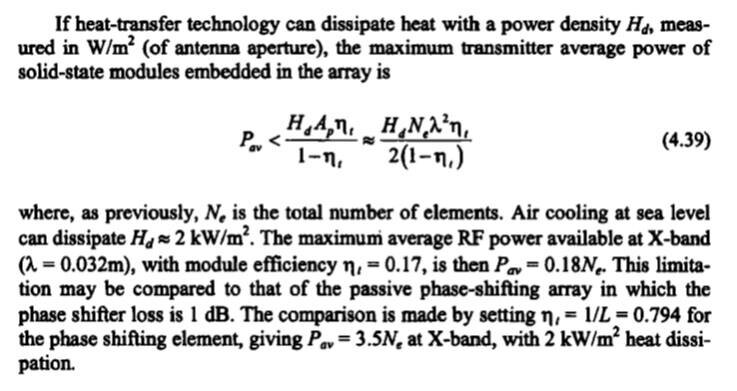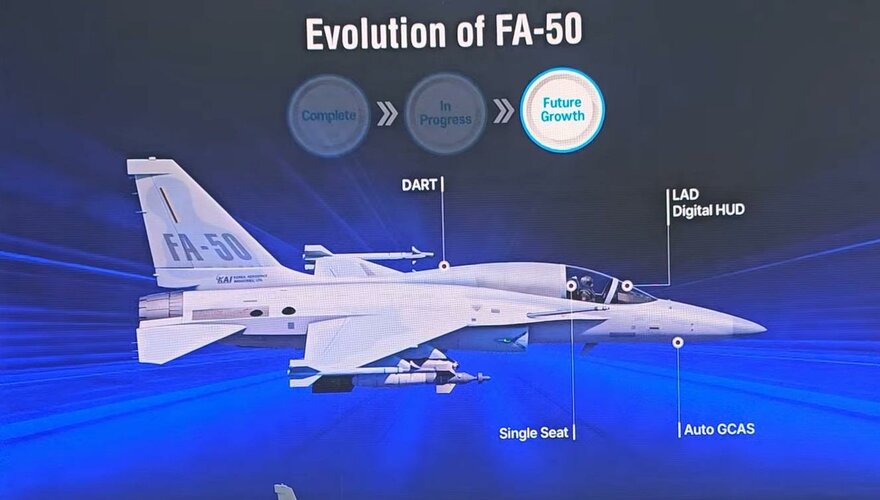- Joined
- 11 February 2010
- Messages
- 1,641
- Reaction score
- 2,671
How are you able to come up with such a specific figure when there are so little details known to public regarding those radars? Both uses GaN, both are limited by cooling capacity of what is already there in FA-50's nose, we know that Phantom Strike on FA-50 weighs 45kg wheras ESR-500A has 500 TRM and that's just about it. "44%" sounds like something you've got from a RNG.
The kind of cooling kinda give some hints. Air cooling for fighter radar typically have 2-3 KW of cooling capacity. That directly constrain the average power of the TRM's.
The picture of the antenna and T-50's nose radome dimension is also known as well as the dimension of the AN/APG-67 radar that also planned to be used by T-50's, This allows estimate of number of TRM's. This can be improved with estimates of frequency.
The number of the TRM's for the phantom strike can be estimated with following equations, this assumes half wavelength spacings with some fudge factor to take account of how big the antenna aperture one can be filled with TRM's.
(4*Antenna Area*Fudge Factor)/Operational wavelength^2
That is how i came up with estimates of 811 TRM's for Phantom strike assuming the GaN allows smaller modules to be made and occupy 95% of antenna aperture, with the 5% are structures or additional channels for countermeasure. Of course it could be smaller say 85% or even less.
While for ESR-500 you can immediately work on the constrain of average power using equations that can be found in K.Barton's "Radar Systems Analysis and Modeling"

As for the 44% figure well, it's not RNG number. Since performance of AESA radar directly related to number of TRM's and in fact it relates to cube of TRM's you can plug that value into radar reference equation like this :
Rfactor = ((ScaledRadarTRM/ReferenceRadarTRM)^3)^(1/4)
The 1/4 factor comes directly from the 4th root law of Radar equation. Since we have Phantom strike radar estimates of TRM worked out (811) We can begin comparing using the ESR-500 as reference/baseline Thus :
Rfactor=((811/500)^3)^(1/4)
Rfactor=1.44
That's how the 44% Advantage come from. Basically my assumed Phantom strike radar would have 44% range advantage. It also shows assumption that the TRM rating would be the same due to same cooling. The peak power could be different but it is average power that determines range performance.
The more convenient thing about using the radar equation that way is you can add more variables e.g SNR, Dwell time, Loss factors, Noise figure or system temperature to take account for more differences and to do a "what if scenario" e.g "what happen if i double the dwell time".


















